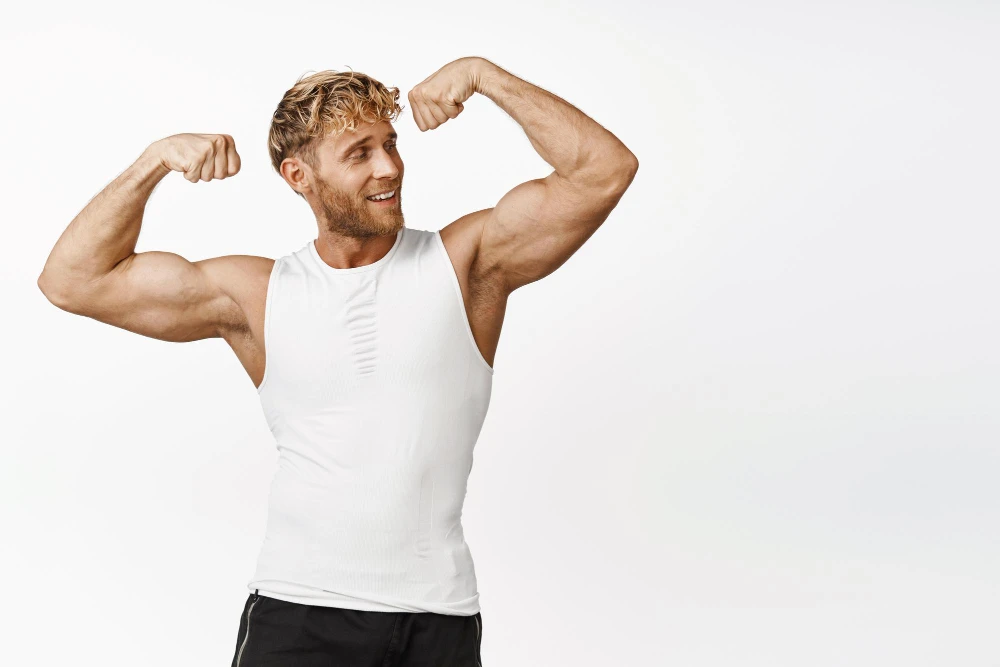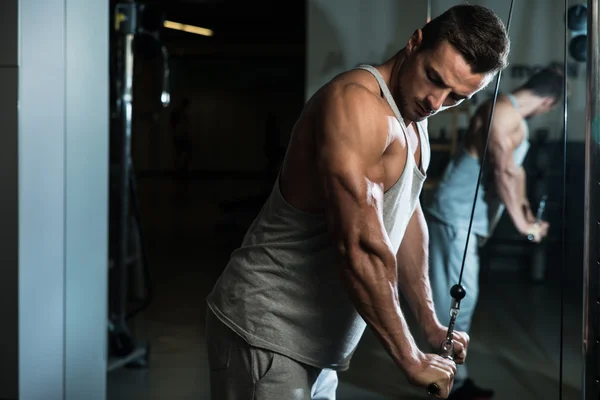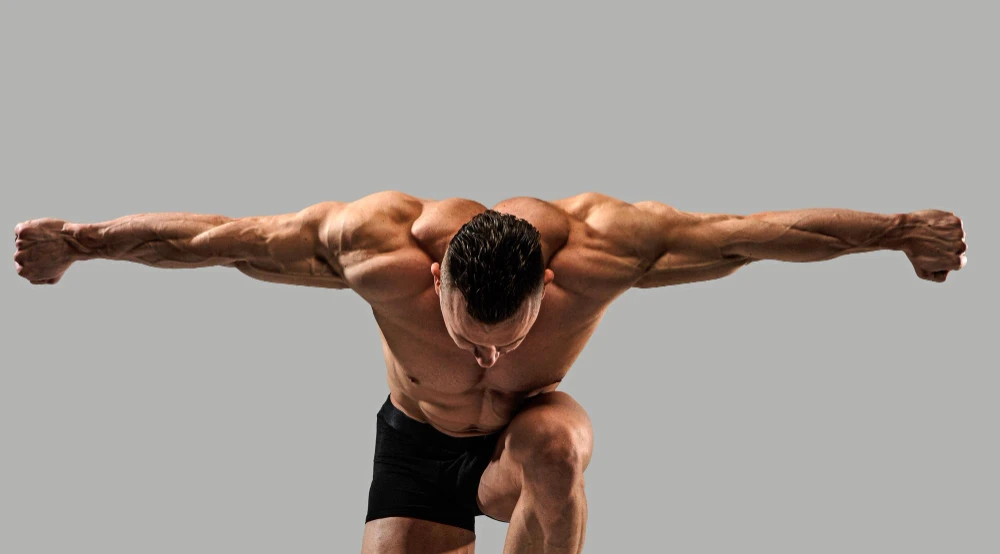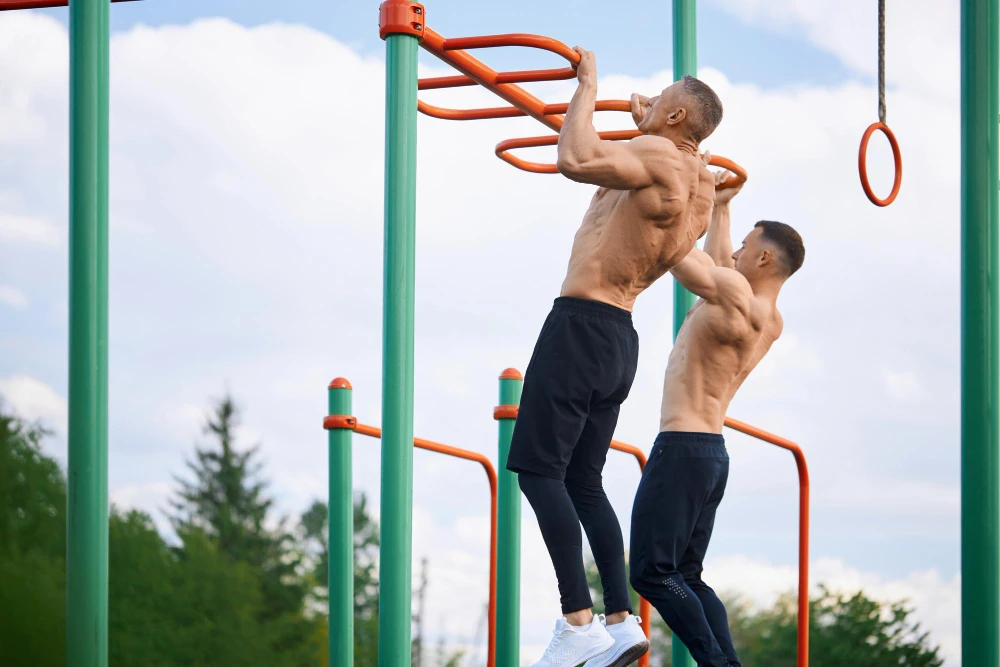Understanding the Anatomy of Biceps and Triceps
The upper arm is home to two essential muscle groups: the biceps and triceps. While the biceps reside at the front, the triceps are located at the back. Playing different roles, the biceps allow for elbow flexion, while the triceps perform elbow extension. Each muscle consists of multiple heads – the biceps have a long head and short head, while the triceps have a long head, lateral head, and medial head. These muscles are not only crucial for everyday activities but also play a vital role in strength training.
The Fundamentals of Bicep and Tricep Functionality
The biceps and triceps are two major muscle groups in the upper arm that play crucial roles in arm movement and function. Understanding their functionality is important for anyone interested in strength training, fitness, or general knowledge of human anatomy. Here are the fundamentals of bicep and tricep functionality:
Biceps:
- Muscle Anatomy: The biceps brachii, commonly referred to as the biceps, is a two-headed muscle located on the front of the upper arm. It has a long head and a short head, both of which originate from the scapula (shoulder blade) and insert into the radius bone in the forearm.
- Function: The primary function of the biceps is to flex the elbow joint, which means it is responsible for bending your arm at the elbow. It also plays a secondary role in supinating the forearm, which is the movement of turning your palm upward.
- Exercises: To target the biceps, exercises like bicep curls (with dumbbells or a barbell), hammer curls, and chin-ups are effective. These exercises involve bending the elbow against resistance, which helps develop and strengthen the biceps.
- Training Tips: To maximize bicep development, it’s important to perform exercises with proper form and a full range of motion. Vary your training with different grips and angles to target different parts of the biceps.
Triceps:
- Muscle Anatomy: The triceps brachii, or triceps for short, is a three-headed muscle located on the back of the upper arm. It has a long head, a lateral head, and a medial head. The triceps originate from the scapula and humerus and insert into the ulna bone in the forearm.
- Function: The primary function of the triceps is to extend the elbow joint, which means it straightens your arm at the elbow. The triceps are essential for actions like pushing, straightening your arm after a bicep curl, or extending your arm during activities like push-ups and bench presses.
- Exercises: To target the triceps, exercises like tricep dips, tricep pushdowns, skull crushers, and close-grip bench presses are effective. These exercises involve extending the elbow against resistance to develop and strengthen the triceps.
- Training Tips: Proper form is crucial when training the triceps to avoid injury. Ensure that you engage your triceps throughout the entire range of motion and don’t use excessive momentum. Vary your exercises and incorporate different angles to target all three heads of the triceps.
In summary, the biceps are responsible for bending the elbow and supinating the forearm, while the triceps are responsible for straightening the elbow. Both muscle groups are essential for various upper body movements and should be trained as part of a well-rounded strength training program. Additionally, it’s important to have a balanced approach to training both muscles to avoid muscle imbalances and potential injury.

Comparing the Size of Biceps and Triceps
When comparing the size of biceps and triceps, it is observed that the triceps are generally larger and bulkier than the biceps. This can be attributed to the fact that the triceps have three heads, while the biceps have two heads. The triceps play a significant role in contributing to the overall muscle mass of the upper arm. However, it’s important to note that the size and appearance of these arm muscles can vary based on individual genetics and training.
Why are Triceps Generally Larger?
The triceps are generally larger due to their three heads, which allow for a greater muscle mass. Their involvement in functional movements like pushing and pressing also contributes to their size. Compound exercises such as bench press and dips heavily engage the triceps, further stimulating their growth. Additionally, genetics and individual training methods can play a role in the size difference between the triceps and biceps.
Why Might Triceps Seem Stronger?
Triceps often appear stronger due to their larger size and the presence of three heads, which provide more muscle mass and power for extension movements. They also play a significant role in upper body exercises like bench presses and push-ups, further enhancing their perceived strength. Additionally, triceps are frequently activated during everyday activities, contributing to their functional strength.
How Biceps Contribute to Overall Arm Strength
Biceps play a crucial role in upper body movements by aiding in elbow flexion. They contribute to overall arm strength by assisting in pulling exercises like pull-ups and rows. Additionally, biceps help stabilize the shoulder joint during certain movements, enhancing overall strength. Along with tricep strength, they help maintain balance and symmetry. Composed of two heads – the long head and the short head – the biceps brachii provide both power and aesthetic appeal to the arms.
Balanced Development: Biceps and Triceps
To achieve overall arm strength and symmetry, it is crucial to balance the development of both the biceps and triceps. This ensures that potential muscle imbalances are prevented, reducing the risk of injuries. The biceps and triceps act as antagonist muscles, working together to provide optimal joint stability and power. By focusing on the development of both muscle groups, better performance in various exercises can be achieved. Additionally, a balanced development of the biceps and triceps results in impressive arm aesthetics and functional strength.
The Importance of Symmetrical Muscle Development
Symmetrical muscle development plays a crucial role in creating a balanced physique and minimizing the risk of muscle imbalances. Not only does it enhance overall body proportions and visual appeal, but it also ensures optimal performance in terms of strength and functional movements. By focusing on both the biceps and triceps equally, you can achieve a well-rounded physique that is aesthetically pleasing and capable of delivering impressive results in various exercises. In fact, symmetrical muscle development is often associated with overall fitness and athleticism.
Effective Bicep and Tricep Exercises
Effective bicep and tricep exercises can help you build strong, well-defined arm muscles. Here are some exercises for both muscle groups:
Bicep Exercises:
- Barbell Curl: This is a classic bicep exercise. Hold a barbell with an underhand grip, arms extended, and curl it up towards your chest while keeping your elbows stationary.
- Dumbbell Curl: Similar to the barbell curl, but you use dumbbells instead. This can help work each arm independently.
- Preacher Curl: Use a preacher curl bench or an incline bench to isolate the biceps. This helps prevent cheating and focuses the exercise on the biceps.
- Hammer Curl: Hold dumbbells with a neutral grip (palms facing each other) and curl them up. This works not only the biceps but also the brachialis muscle.
- Concentration Curl: Sit on a bench, rest your elbow against your inner thigh, and curl a dumbbell with one hand. This isolates the biceps and helps with the peak of the muscle.
Tricep Exercises:
- Tricep Dips: Using parallel bars or a bench, lower and raise your body by bending and extending your arms. This is a great compound exercise for the triceps.
- Tricep Pushdown: Use a cable machine with a rope or straight bar attachment. Push the attachment down, extending your arms fully to work the triceps.
- Skull Crushers (Lying Tricep Extension): Lie on a bench with a barbell or dumbbells, lower them to your forehead, and extend your arms upward. Be careful not to drop the weight on your face.
- Tricep Kickbacks: Hold a dumbbell in one hand and bend forward slightly. Extend your arm behind you while keeping your upper arm stationary.
- Close-Grip Bench Press: Similar to a standard bench press but with a narrower grip. This puts more emphasis on the triceps.
Remember these tips for effective arm training:
- Use proper form to avoid injury and maximize muscle engagement.
- Vary your exercises to prevent plateaus and work different parts of the muscles.
- Incorporate both compound and isolation exercises for balanced development.
- Pay attention to your diet and overall fitness regimen for optimal results.
It’s important to note that building muscle takes time and consistency. Be patient and gradually increase the weight or resistance as you progress in your workouts. Additionally, always warm up before starting your workout and cool down afterward to reduce the risk of injury. Consult a fitness professional or trainer if you’re unsure about your form or routine.

Common Training Mistakes for Biceps and Triceps
Training your biceps and triceps effectively is crucial for developing well-rounded arm strength and aesthetics. However, there are several common mistakes people make when working on these muscle groups. Avoiding these mistakes can help you achieve better results and reduce the risk of injury. Here are some common training mistakes for biceps and triceps:
- Neglecting Compound Movements: Focusing solely on isolation exercises for your biceps and triceps can limit your overall arm development. Compound exercises like bench presses, pull-ups, and rows engage these muscle groups as secondary movers. Make sure to include these compound movements in your routine to stimulate overall arm growth.
- Poor Form: Using improper form is a major mistake that can lead to injuries and reduced effectiveness. Ensure that you maintain proper posture, control the weight, and use a full range of motion during exercises. Avoid using momentum to lift the weights, as this reduces the tension on the target muscles.
- Overtraining: Overworking your biceps and triceps by training them too frequently or with too much volume can hinder recovery and muscle growth. Allow sufficient time for recovery between sessions, and avoid excessive sets and reps.
- Ignoring the Eccentric Phase: The eccentric (negative) phase of an exercise, when you lower the weight, is just as important as the concentric (lifting) phase. Many people neglect the eccentric phase, which can limit muscle growth. Control the weight during both phases to maximize muscle tension.
- Using Too Much Weight: Lifting excessively heavy weights with poor form can lead to injury and shift the emphasis away from the target muscles. Use weights that allow you to perform exercises with proper form and feel a strong contraction in your biceps and triceps.
- Lack of Variation: Doing the same exercises repeatedly can lead to plateaus in your progress. Include a variety of bicep and tricep exercises in your routine to target different parts of the muscles and keep your workouts challenging.
- Insufficient Warm-Up: Neglecting to warm up properly before your arm workouts can increase the risk of injury. Perform dynamic stretches and light cardio to increase blood flow to the muscles and prepare them for the workout.
- Neglecting Rest and Recovery: Muscle growth occurs during the rest and recovery periods, not during the workout itself. Ensure you get adequate sleep and nutrition to support muscle repair and growth.
- Not Incorporating Isometric Holds: Isometric contractions (holding a position without moving) can be a valuable addition to your arm training. Incorporate exercises like static bicep curls and tricep pushdown holds to challenge your muscles in different ways.
- Poor Nutrition: Proper nutrition is essential for muscle growth. Make sure you’re consuming enough protein and calories to support your training goals.
- Not Listening to Your Body: Pay attention to your body’s signals. If you experience pain or discomfort beyond the typical muscle soreness, it’s essential to rest and potentially seek medical advice.
To make the most of your bicep and tricep workouts, focus on proper form, consistency, and progressive overload. Tailor your training program to your individual goals and body type, and consider consulting with a fitness professional for personalized guidance.
How do Biceps and Triceps Complement Each Other in Daily Life?
Biceps and triceps work together seamlessly in daily life to perform various tasks. The biceps flex the arm, allowing us to carry groceries or pick up a child, while the triceps extend the arm for activities like pushing open doors or lifting heavy objects overhead. Both muscles provide stability and strength, complementing each other perfectly.
Are there any Special Training Guidelines for Biceps and Triceps?
To effectively target the biceps, incorporate exercises like dumbbell curls or barbell curls. Strengthen and tone the triceps with exercises like cable pushdowns or tricep dips. Vary the grip or angle to engage different muscle fibers. Focus on progressive overload and maintain proper form to maximize results.
Which muscle can lift heavier – the Bicep or the Tricep?
When it comes to lifting heavier weights, the triceps generally have the edge over the biceps. With three heads and more muscle mass, the triceps provide greater strength. While bicep exercises focus on the front of the upper arm, tricep exercises target the back. However, individual training and genetics can affect the strength ratio between these two muscles. Balanced training of both is crucial for overall arm strength and aesthetics.
Lets Sum Up
To sum it up, both the biceps and triceps play crucial roles in arm strength and functionality. While the triceps may seem stronger due to their larger size and primary function of extending the elbow joint, the biceps also contribute significantly to overall arm strength. It is essential to focus on balanced development of both muscles to ensure symmetry and avoid muscle imbalances. Incorporating effective exercises specifically targeting the biceps and triceps is key to enhancing strength and power.
Lastly, remember that lifting heavier weights is not solely determined by one muscle group but involves the coordination and activation of multiple muscles. So, embrace a well-rounded approach to arm training and challenge yourself to reach new heights in your fitness journey.



